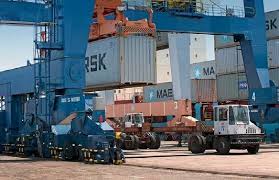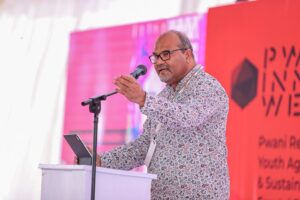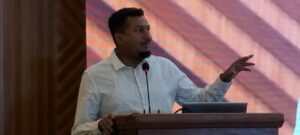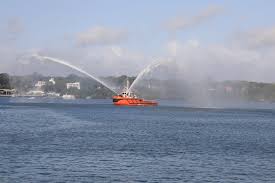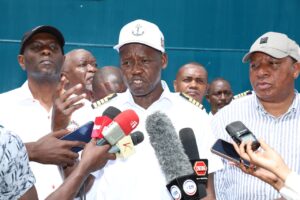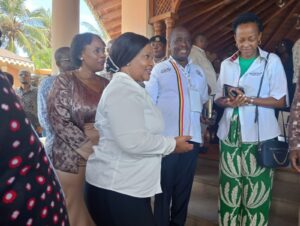Charting New Waters – TUM’s Strategic Maritime Partnership with Korea
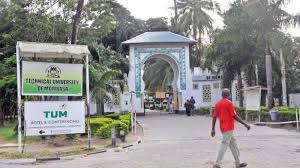
Technical University of Mombasa. 9photo/ Courtesy)
By Andrew Mwangura
Email, thecoastnewspaper@gmail.com
The signing of a memorandum of understanding between the Technical University of Mombasa (TUM) and the Korea Institute of Maritime and Fisheries Technology (KIMFT) marks a significant milestone for Kenya’s maritime education and training landscape.
This collaboration is not merely a ceremonial gesture; it is a decisive step toward transforming TUM into a regional center of excellence in maritime studies, research, and innovation.
In a world increasingly defined by ocean-based economies, the partnership between TUM and Korea’s premier maritime institution could become the wind that propels Kenya’s maritime ambitions forward.
KIMFT, operated by the government of South Korea, is a world-class maritime education and research institute located in Busan, one of the world’s busiest ports.
Since its establishment in 1998 through the merger of the Korea Fishing Training Center and the Korea Maritime Training and Research Institute, KIMFT has built a reputation for producing highly skilled maritime professionals and conducting cutting-edge research in marine engineering, fisheries technology, and seafaring operations.
Its journey mirrors South Korea’s transformation from a modest post-war maritime nation to a global shipping powerhouse—one that today commands a fleet of over 1,600 vessels.
It is this experience and depth of expertise that KIMFT now brings to its collaboration with TUM.
During his visit to Mombasa on October 24, 2025, KIMFT Rector Professor Jinsoo Park underscored the purpose of this partnership: to strengthen linkages, research, and collaboration through shared knowledge, experience, and technology.
He emphasized that international partnerships are essential in advancing maritime education and building globally competitive professionals.
Korea’s success story—rising from a fleet of just three ships in 1954 to becoming one of the world’s top maritime nations—offers Kenya valuable lessons on the transformative power of strategic investment, technology transfer, and education.
For TUM, this partnership could not have come at a better time. As Vice Chancellor Professor Laila Abubakar noted, the university has already established the Maritime and Seafaring Studies Institute to focus on specialized maritime training programs.
Given Mombasa’s strategic location along the Indian Ocean and Kenya’s growing involvement in the blue economy, TUM is uniquely positioned to serve as the nation’s anchor for maritime education.
Yet, as the Vice Chancellor rightly observed, Kenya still lags behind its regional neighbors, Tanzania and Ethiopia, in maritime training and capacity development. The challenge, therefore, is not just to expand programs but to ensure that quality, not quantity, defines the growth of this sector.

Professor Laila’s call for all Kenyan institutions offering maritime programs to form a unified network through a joint memorandum of understanding reflects visionary leadership.
Collaboration, resource sharing, and mutual accreditation would not only raise training standards but also enhance Kenya’s credibility in the global maritime arena.
Maritime training, by its very nature, transcends borders. It demands adherence to international standards, practical exposure, and continuous adaptation to emerging technologies such as automation, digital navigation systems, and green shipping practices.
Through the partnership with KIMFT, TUM stands to access precisely these resources and standards. Already, the collaboration is bearing fruit.
Under the initial phase of the partnership, ten members of TUM’s academic and technical staff underwent a one-month training program in South Korea from mid-September to mid-October 2025.
This exchange program, organized by KIMFT, exposed TUM staff to the latest maritime technologies, ship simulation systems, and advanced fisheries management tools.
As Captain Talib Ibrahim, director of the TUM Maritime and Seafaring Studies Institute, observed, the knowledge gained from this training will be instrumental in equipping Kenyan students with the competencies required to thrive in the global maritime industry.
Deputy vice-chancellor for academic research and extension Professor Peter Gichangi aptly reminded the audience that maritime training is inherently global.
Kenya cannot afford to operate in isolation when the ocean economy connects nations through trade, technology, and talent mobility.
By collaborating with institutions such as KIMFT, TUM positions itself not just as a local training center, but as an international academic hub aligned with global maritime standards and practices.
This partnership is therefore more than an academic exchange; it is a bridge between Kenya’s aspirations and the proven expertise of a nation that has successfully navigated the waters of maritime transformation.
Through shared research, joint innovation projects, and curriculum development, TUM will enhance its ability to produce seafarers, marine engineers, and maritime administrators capable of competing and contributing globally.
The ripple effect will be profound—improved employability for Kenyan graduates, enhanced maritime safety and efficiency, and greater participation in the global blue economy value chain.
In the long run, the collaboration between TUM and KIMFT will redefine the maritime training landscape in Kenya. It will attract talented students and researchers, foster cross-border academic partnerships, and stimulate innovation in marine technologies.
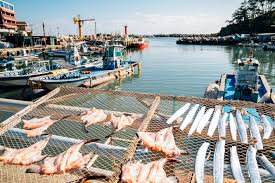
Most importantly, it will align Kenya’s maritime education with international benchmarks, ensuring that the nation is not left behind in the fast-evolving global maritime order.
In a century where oceans define economic power, the TUM-KIMFT partnership is both strategic and visionary. It signals Kenya’s readiness to reclaim its maritime destiny—not just as a coastal nation, but as a leader in maritime education, research, and blue economy innovation.
The writer is a policy analyst specializing in maritime governance and blue economy development.

